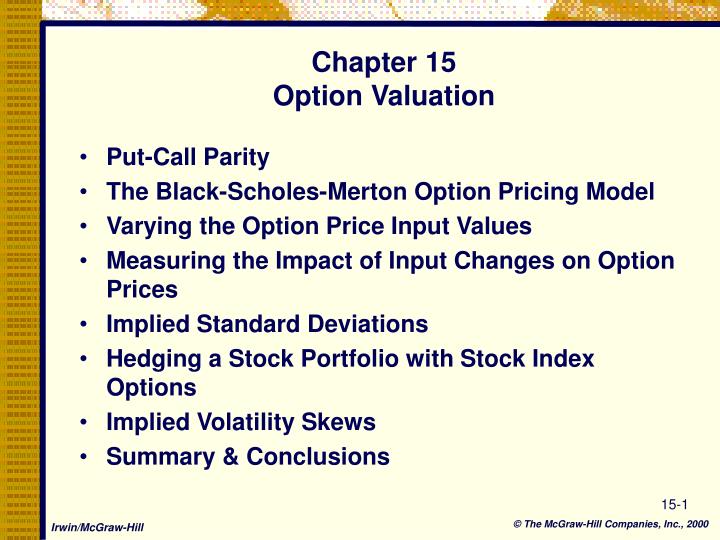Contents
Even if implemented quickly, the macro effects of monetary policy generally occur after some time has passed. The effects on an economy may take months or even years to materialize. Monetary policies can create predictable results with the tools which are available to the central banks. The caveat of this advantage is that those who implement the tools must use them as intended for them to work. There isn’t a need to wait for the effects of each choice to become measurable because there is certainty in what each tool can provide. There are two primary actions that governments rely upon when influences an economy at the macro level.

The tears arising out of foreign companies capturing or taking over Indian businesses as and when the stock markets arc thrown open to foreign investments, are highly exaggerated. Mr. Gautam Kazi, Managing Director of World Bank recently observed that India’s economic reforms have transformed the business climate favourably in the world’s second most populous country. Moreover, higher outlays had been allocated in the Eighth Plan in agriculture, rural development, village and small industrial and environment sectors with the aim of providing better job opportunities. Therefore “Welfare of the masses” should be the main objective of the economic reforms introduced in the country. Therefore, economic reforms—which would bring with them modernization, up-gradation and introduction of new technologies—might cause some job losses on one hand.
The real business cycle argues that macroeconomic fluctuations are due to changes in technological progress and supply-side shocks. Therefore, using demand-side policy to influence economic growth fails to address the issue and just makes the situation worse. For example, if the government increase spending it will have to increase taxes or sell bonds and borrow money, both methods reduce private consumption and investment. It has been observed that in India there are three weakest links in economic reforms of the country. Firstly, the government has failed to take into confidence the organized workers at any stage of the implementation of economic reforms. In a country like India, there is no social security net, no unemployment benefit and till today there are no institutions for retraining of workers in newer skills.
Types of fiscal policy
Policies should be such that all available resources should make their way into the necessary and needed development opportunities. Fiscal spending could be influenced and directed to uncertain seats rather than areas of need. The government often uses fiscal spending as a political tool during elections, increasing government expenditure to attract votes. Increased public spending on goods and infrastructure, such as roads and bridges, directly increases aggregate demand. Likewise, companies hired for those projects also see an increase in earning.
Inflation is often treated as a negative from an outside perspective because it causes the price of goods and services to rise. Having a small amount of it is actually healthy for a growing economy because it encourages investment activities. This event can also allow employees to expect higher wages for the work they provide. By raising the target interest rate under monetary policy, investment becomes more expensive. That means economic growth is slowed somewhat because of this reaction, which allows the central bank to manage inflation levels.
It boosts aggregate demand, which in flip will increase output and employment within the economy. In pursuing expansionary policy, the federal government increases spending, reduces taxes, or does a mix of the two. Since government spending is one of the elements of combination demand, an increase in government spending will shift the demand curve to the right. If an financial system is rising uncontrolled, the Fed might interact in contractionary policy by lowering the supply of money.
Additionally, it is designed to attempt to keep GDP growth at 2%–3% and the unemployment price near the natural unemployment fee of 4%–5%. This implies that fiscal coverage is used to stabilize the economic system over the course of the business cycle. Expansionary fiscal coverage is used to kick-start the economy throughout a recession. It boosts aggregate demand, which in flip will increase output and employment within the economic system. In pursuing expansionary coverage, the federal government will increase spending, reduces taxes, or does a mix of the 2.
The Implications of Fiscal Policy and Monetary Policy to Business
In order to make necessary remedy to these problems of PSEs, economic reforms will play a very important role. So that the benefits of development can be equally shared by all inhabitants of an economy, the income should be appropriately distributed, it is a fundamental part of economic development. Welfare schemes, where we increase public expenditure for the less privileged class, can be promoted. In underdeveloped countries the need or importance of a good fiscal policy is at a high priority. In a democratic set up direct methods are not accepted, the states have to play an active and essential role. The government thus uses the powerful tool of fiscal policy to achieve its goal of development, maintaining healthy employment opportunities, economic stability and ensure permanency in growth.
- Contractionary fiscal coverage, however, is a measure to extend tax charges and reduce government spending.
- Necessarily the economic reforms has failed to garner supports from the organized workers, in general.
- Because it is a macroeconomy decision, there is no way to alter the impact on local segments of the economy which may not need any stimulus.
- Central banks have the capacity to act quickly when they sense there is an issue with the monetary policy.
- Persistent government budget deficits can increase the demand for borrowing, rising market interest rates and hence, lowering private spending.
According to the National Bureau of Economic Research, it began in December 2007, and the country was only able to enact the Economic Stimulus Act in February 2008. Even when the government increases its spending, it takes some time before the money trickles down to people’s pockets. Economic Growth Increase – The various fiscal measures a country employs facilitate expansion of the national economy. For example, when the government reduces tax rates, businesses and individuals will have a greater incentive to invest and steer the economy forward.
Expansionary Fiscal Policy
The three types of fiscal policy are neutral, expansionary, and contractionary. In addition to that, they also change the degree of and form of borrowing money. This could either be domestic borrowing from citizens to reduce the supply of money in a nation or international borrowing to increase the money supply, both of which stabilize the economy. The scope of the policy depends on the goals that the policymakers aim to achieve. For example, if the government spends more on defense projects, it would benefit only a few. But, if the spending is on the construction of dams, the benefit would reach a larger group.
The instruments of contractionary fiscal coverage are utilized in reverse. Fiscal policy is how Congress and different elected officers influence the economic system using spending and taxation. It is used along side themonetary policyimplemented bycentral banks, and it influences the economy utilizing themoney supplyandinterest charges. Conflict of Objectives — When the government makes use of a mixture of expansionary and contractionary fiscal coverage, a conflict of aims can happen. If the national authorities desires to lift more cash to increase its spending and stimulate economic progress, it can concern bonds to the general public. When the economy is overheating, then again, fiscal coverage does the opposite and slows down economic growth to handle the problem of inflation.
Fiscal policy is the means by which a government adjusts its spending levels and tax rates to monitor and influence a nation’s economy. It is the sister strategy to monetary policy through which a central bank influences a nation’s money supply. These two policies are used in various combinations to direct a country’s economic goals. https://1investing.in/ Here’s a look at how fiscal policy works, how it must be monitored, and how its implementation may affect different people in an economy. On the opposite hand, when the financial system is overheating by rising beyond its capacity, fiscal coverage does the other and slows down financial growth to handle the problem of inflation.

As the popular saying goes, ‘no man is an island’ together, many small businesses will profit from the increased money supply from the government. A discount in taxes will leave more disposable revenue and trigger consumption and financial savings to extend, additionally shifting the mixture demand curve to the right. An improve in authorities spending combined with a discount in taxes will, unsurprisingly, also shift the AD curve to the proper. Interest rates can only be lowered nominally to 0%, which limits the bank’s use of this policy tool when interest rates are already low.
How Do Individual Businesses React to Different Changes in Fiscal Policy?
The new economic policy has so far failed to make the economy a viable one. It is argued that the benefits of globalisation and liberalisation should percolate down to the small and ordinary person both in the rural and urban areas of the country. Liberalisation of trade policies through withdrawal of import duties is being done to facilitate imports from developed countries, particularly USA, facing a recession in their economics largely. This sort of criticism may not be totally baseless or politically motivated.
If a government spends more than what it earns, it leads to a deficit. The government then needs to borrow funds from external sources to maintain the balance. Indirect taxes are very effective in influencing spending behavior and in generating revenue with little cost to the government. The government can quickly raise indirect taxes for social purposes, such as reducing alcohol or cigarette consumption. If he spends it, he will increase demand and companies have to produce more.
Necessarily the economic reforms has failed to garner supports from the organized workers, in general. The current economic reforms in India made provision for increased flow of foreign direct investment which would help the country to modernize its technology and also for increasing its productivity. The country is facing a huge growth of non-plan expenditure, particularly due to its ever increasing expenditure on defence, subsidies and interest payment. The current economic reforms have made an attempt to reduce this increasing trend in non-plan expenditure through withdrawal of subsidies of food, fertilizers, exports and even on higher education.
But there is a secondary, less readily apparent fiscal policy effect on the interest rate. So, it is very important for a government to monitor its fiscal policy constantly. And, if there are any signs of inflation going out of control, the government must address it accordingly. Taxation includes taxes on income, property, sales, and investments. On the one hand, more taxes means more income for the government, but it also results in less income in the hand of the people.
One effort in this is to design a robust tax system that counters economic disruptions. Whereas in developed countries, the main objective of the fiscal policy is to maintain stability. The spending was good for business and business owners, but the unemployed saw very little benefit. The Post also concluded that while helping people stay afloat was a worthy goal, Washington also needed to spend more on fighting and containing the pandemic. Instead, the relief package ran out with the coronavirus still rampant. In the United States, the Federal Reserve has powerful influence over interest rates.
Spending on military projects or on infrastructure can produce positive benefits besides economic growth. Government fiscal policy uses spending, interest rates and taxes to influence the economy, advantages and disadvantages of fiscal policy reduce poverty and stimulate growth. Good fiscal policy can keep the economy from collapsing during a crisis. Governments are often constrained in their policy by debt, law and other issues.